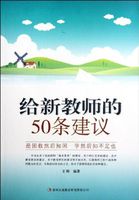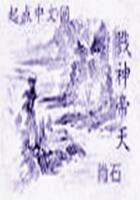[77] 黄日强,许惠清。能力本位职业教育的特征[J]。外国教育研究,2000,27(5):56~58。
[78] 石伟平。能力本位职业教育与培训:背景与特征[J]。全球教育展望,1997(6):35~43.
[79] 闫瑞芹,沈宁。护理核心能力研究及发展现状[J]。护理研究,2004,18(2):201~203.
[80] 徐建鸣。护理人员核心能力的研究与进展[J]。上海护理,2005,5(2):50~52.
[81] Department for education and skills(UK)。The White Paper“The Future of Higher Education”,2003.http://www。dfes。gov。uk/hegateway/hereform/whitepaperconsultation/index。cfm。
[82] Barbara R。Heller,Maria T,et al。The future of nursingeducation:ten trends towatch[J/OL]。NLN Jouranl。http://www。nln。org/nlnjour- nal/infotrends。htm。W ed,Sept。13,2000。
[83] Barbara CH,Susan RJ。Contemporary nursing:issues,trends& management。Mosby,Inc。ST Louis,USA,1999:128~161.
[84] American Association of Colleges of Nursing(AACN)。Theessentials of Master-s education for advanced practice nursing,1996。http://www。aacn。nche。edu。
[85] American Association of Colleges of Nursing(AACN)。Theessentials of baccalaureate education for professional nursing practice,1998。http://www。aacn。nche。edu。
[86] National League for Nursing Accreditation Commission(NLNAC)。Accreditation manualwith interpretive guidelines by programtype for post‐secondary and higher degree programs in nursing,2004.http://www。nlnac。org。
[87] Commission of Collegiate Nursing Education(CCNE)。Standardsfor Accreditation of Baccalaureate and Graduate Nursing Programs,Amended October,2003.http://www。aacn。nche。edu/Accreditation/NewStandards。htm。
[88] The Quality Assurance Agency for High Education(QAA)。Benchmark statement:Health care programmes,2001.http://www。qaa。ac。uk。
[89] TheUKCC Commission for Nursing and Midwifery Education。Fitness for practice。Nursing and Midwifery Council,London,www。nmc‐uk。org。
[90] Nursing and Midwifery Council。Standards of proficiency for pre‐registration nursing education。http://www。nmc‐uk。org。
[91] Australian Nursing and Midwifery Council。National CompetencyStandards for the Registered Nurses(4th)[M]。Australian NursingCouncil Inc,2006。
[92] Hughes,K。Quality and marketing issues in nursing education。Br‐J‐Nurs,2000,9(12):763~768。
[93] American Nurses Association。Nursing(2nd,2004):scope andstandards of practice。Washington,D。C。:Nursesbooks。org。
[94] The Quality Assurance Agency For Higher Education。Handbook for Academic Review。http://www。qaa。ac。uk/reviews/academic/Review/default。asp。2004.
[95] Nurses Board of Victoria。Standards for Course Accreditation。http://www。nbv。org。au。
[96] Diana Green。What is quality in higher education。Buckinghan,SRHE and Open Uninversity Press,1994:13~18。
[97] Higher Education Division Department of Education,Trainingand Youth Affairs。The Australian Higher Education Quality AssuranceFramework[EB/OL]。http://www。detya。gov。au/highered/mceetya‐cop。htm。
[98] Luann M Daggett,Janie B Butts,Kandy KSmith。TheDevelopment of Organizing F8ramework to ImplementAACN Guidelinesfor Nursing Education。Journal of Nursing Education,2002,41(1):
34~37。
[99] American Nurses Association。Code of ethics for nurses with interpretive statements(3rd.2003)。Washington,D。C。:Nursesbooks。org。
[100] American Nurses Association。Nursing-s social policystatements(2nd,2003)。Washington,D。C。:Nursesbooks。org。
[101] Nursing and Midwifery Council(NMC)。Consultation onproposals arising from a review of fitness for practice at the point ofregistration,2006。http://www。nmc‐uk。org。
[102] Australian Nursing Council。Principles for the Assessment ofNational CompetencyStandards for Registered and Enrolled Nurses,October2002.http://www。anmc。org。au/professional _ standards/index。php。
[103] David TC,Lan N,Vinoda P。Competence in nursing practice:
A controversial concept- A focused review of literature。Nurse EducationToday,2005(25):355~362.
[104] LesStorey。Functional analysis and occupational standards:
their role in curriculum development。Nurse Education Today,1998(18):
3~11.
[105] Jessup J。Outcomes:NVQs and the emerging model ofeducation and training[M]。London:Falmer Press,1991:27。
[106] Burke J。Competency Based Education and Training。London:
The Falmer Press,1989:56~59。
[107] Lenburg CB。The Framework,Concepts and Methods of theCompetence Outcomes and Performance Assessment Model。Online Journalof Issues in Nursing。Washington,D。C。:Amer Nurs Assoc,1999。















